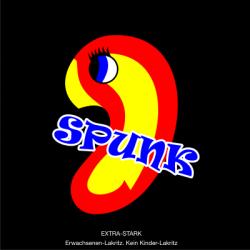You’ve probably heard all about our little economic collapse. For us Icelanders, it’s pretty much back to basics now. No more Caviar and Brut, no more imported Kobe Beef and foie gras – we are once more at the mercy of our rich fishing grounds for grub. To prepare some of you for your future diet, we shed some light on the various fish processing methods. They come in three categories, dried, salted and rotted.
Stokkfiskur
From the 17th throughout the 19th century, most fish in Iceland was processed into the so-called “Stokkfiskur.” That entails it being cut open, the spine removed and it laid out for flat on rocks for drying throughout the fishing season. This was a preparation for export, as well as domestic use. Icelanders used to beat the dried fish up with a mallet and eat it thusly, whilst foreigners soaked it in oils and fluids and made soups and stews out of it.
Skreið
Icelanders don’t really eat skreið, but it was a vital export of ours throughout the 20th century. In English, it is called “dried stockfish” and is made by hanging whole gutted cods to dry in special sheds for a month and a half. It is then packed up in burlap and shipped off to Nigeria, where they use it in soups and stews. These days, Nigerians can’t afford the skreið so much; they rather import shipments of dried fish heads that are processed the same way.
Harðfiskur
A more processed version of Stokkfiskur, Harðfiskur is a local delicacy and is even being exported to Norway these days. The fish is filleted, and the fillets are hung on a stick in a so-called “Harðfiskhjallur” (hard fish shed) for ten weeks. It is then beaten and consumed with butter. This processing method works for haddock, cod and ocean catfish. This method became popular in the latter part of the 19th century and the early 20th, and has been going strong ever since.
Siginn fiskur/Kúlaður steinbítur
The “half-drying” method was a popular one throughout the 20th century. It basically entails gutting the fish and letting it hang for two weeks, then boiling it and eating with butter and potatoes. When it’s done to haddock or cod, it’s called “siginn fiskur” (“lowered fish”), and when it’s done to catfish it’s called “kúlaður steinbítur” (“balled catfish”). Both courses are considered a delicacy among Icelanders past the “pizza age”.
Saltfiskur
Around 1850, Icelanders started importing salt from Spain, and at the same time processing cod with it, often exporting it right back to Spain (where it’s known as Bacalao). The cod salting methods were based on those perfected by the Basque nation, and entailed removing the cods’ spines and intestines, opening them up and stacking them in a pile of salt for a month. The cod was then placed on a rocky surface, where it dried in the sun. Then they sold it to Spain, and Brazil, even. Later, they started “wet-working” it, a process where they soak the cod in saltwater for ten days or so before packing it up and sending it off to Spain. The smaller fillets go to Greece.
Nætursaltaður fiskur
“Night salted fish” is a processing method where you take cod fillets and marinate them in saltwater for the night. The day after, you eat them with butter, sheep-fat and potatoes. A true connoisseur’s meal, that is.
Kæst skata & Kæstur hákarl
The skate and shark are chondrichthyes, and therefore ferment when allowed to rot, as their urine is distributed through their flesh and goes through a chemical change over time. They are in fact poisonous if eaten before the fermentation process is complete. The skate is fermented by throwing it in a box and letting it lie for three weeks. It is a popular food in certain regions, and considered vital for celebrating Christmas by many Icelanders.Shark is fermented in a similar way. First, they cut it to pieces and allow it to rot for ten weeks. Then the flesh is cut into loops and hung up for an additional six weeks, so as to give it the rough texture we know and love. It is often consumed with Brennivín, as the two make an excellent combo.
Buy subscriptions, t-shirts and more from our shop right here!

















